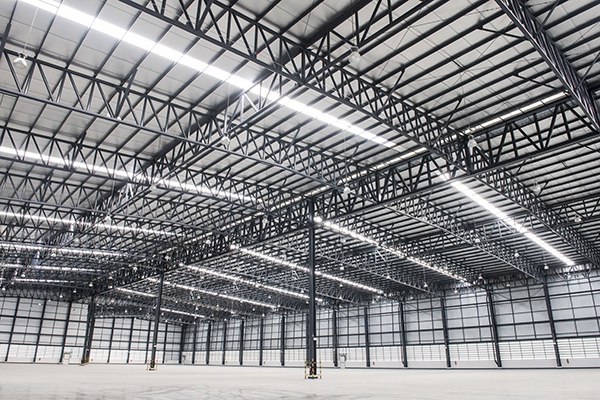
Leasing a warehouse is very different from leasing other types of commercial real estate. While the lease terms may be similar, the way that you analyze the underlying real estate is different. There are more details to consider when choosing a warehouse. In addition, calculating your rent is more complicated since you have to think in a third dimension.
Lease Terms
The basic lease terms and language of a warehouse lease will be familiar if you've done any other commercial leases, although the details are different. For instance, the rents in warehouses are usually calculated on a per square foot basis, although they'll usually be much lower than in other property types. If your warehouse space has any load or core factor, it'll be very minimal, unless you're renting a very small space that shares building-wide common amenities.
Warehouse tenant improvements are usually small, if they're even offered. While they may seem stingy, the reality is that warehouses usually don't need much tenant improvement work. Much of what you'll be installing is trade fixtures that are specific to your business. On the other hand, if you're leasing new space, you can expect a bit more tenant improvement consideration.
Occupancy costs present two challenges. The first is that you may pay two separate rents - a low rent for the warehouse and a higher rent for an office area. The second is that expense liabilities vary between landlords. While a triple net lease usually means the same thing in a warehouse as it does in any other building, modified and industrial gross leases are less predictable. Since there are no commonly applied standards for what these lease terms mean, carefully read any proposed lease.
Configuration
Many of the physical buildings factors that you would deem unimportant in other types of commercial real estate become more important than the lease terms that you often consider closely. Here are a few factors to keep an eye out for:
-
Door quantity and type Depending on how you use your warehouse, you will need varying numbers of doors of different types. Dock-high doors allow you to load directly from the floor of your warehouse into a semi-truck, while a grade level door may be a better match for forklift loading, or cube trucks. Look carefully at how they're distributed through your space.
-
Climate control Less expensive warehouses may not be cooled in summer. The least expensive sites might not have heating systems for winter either. Specialized warehouses, on the other hand, can offer refrigeration for perishable goods or humidity controls.
-
Floor load and flatness The strength and smoothness of a warehouse's floor determines how much weight it can hold, and how efficiently you can move your stored items around.
-
Access and parking When choosing a warehouse, don't just look at the general area. Consider if it has enough room for your trucks to pull in and turn around. You should also watch for convenient access to roads, highways and rail.
The Magic Number
While it's not included in a warehouse's lease terms on paper, the rent per cubic foot is unique to warehouse space and is very important. Going from a 9 foot ceiling height in an office to an 11 foot ceiling doesn't make a difference - it still holds the same number of people. However, going from a 32 foot high warehouse to a 39 foot high one - the same 22 percent increase - significantly changes how much you can store. Therefore, calculating rent on a per-cube basis can give you a better comparison.
Other great Warehouse articles:
Commercial Warehouse Touring Tips
4 Secrets to Commercial Warehouse Leasing
3 Quick Fixes to Shrink Warehouse Occupancy Costs
Subscribe to our blog for more great tips!!








